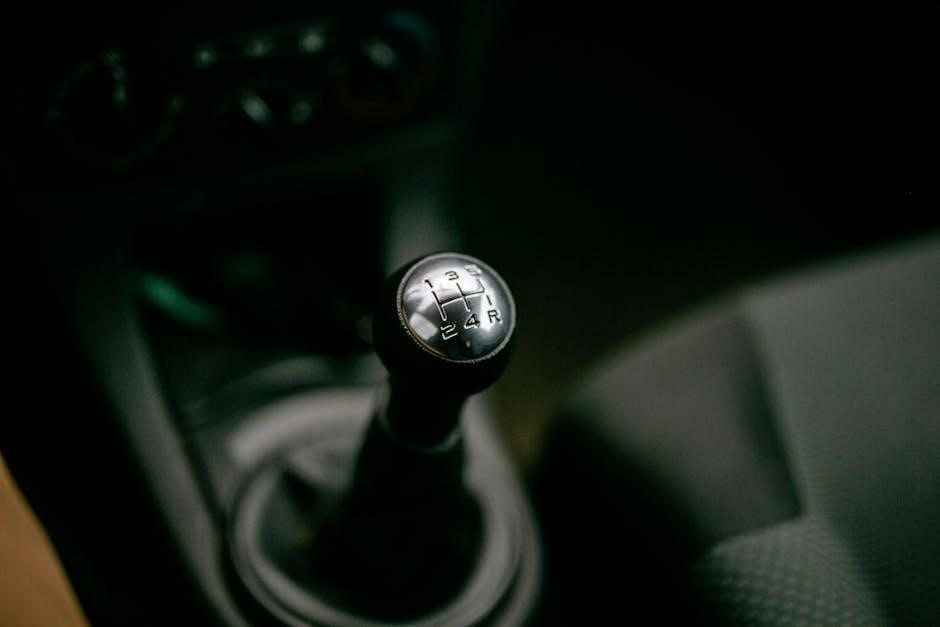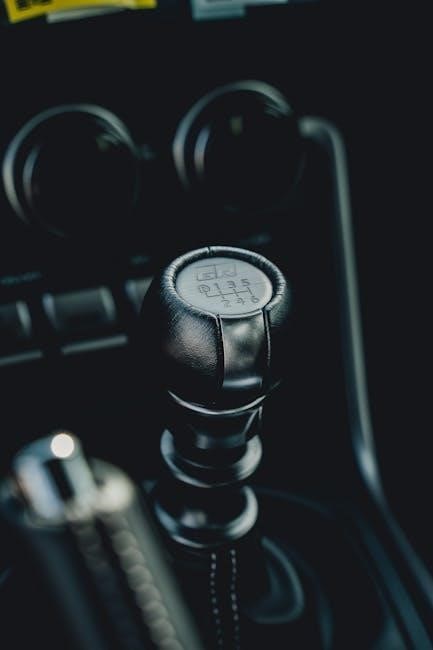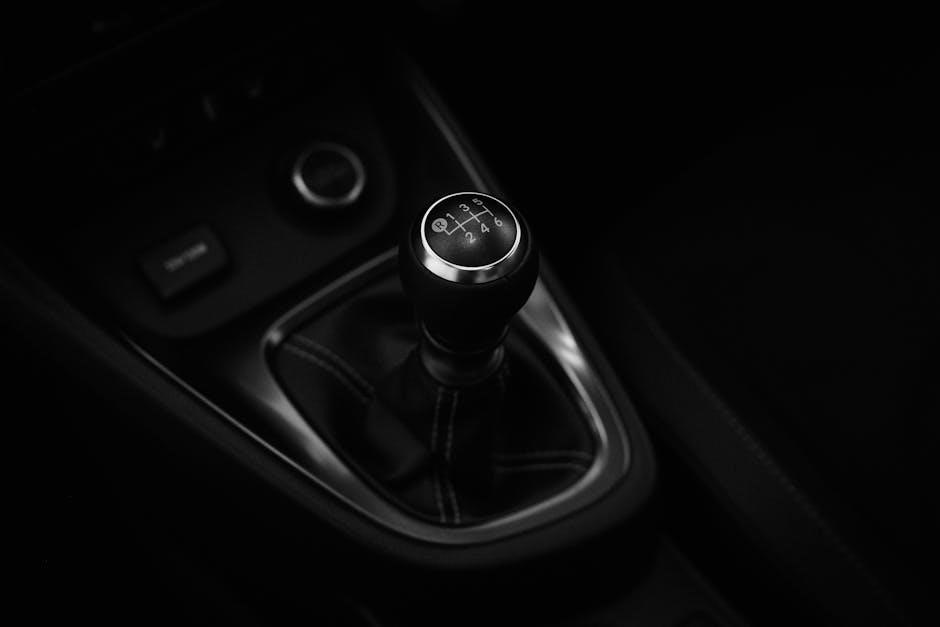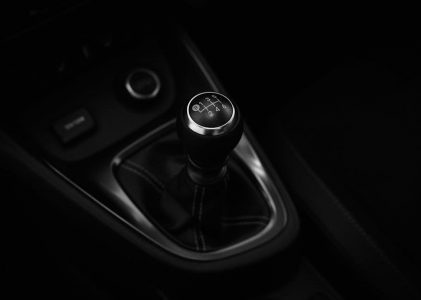Stall converters optimize performance in manual transmissions by enhancing low-end torque and acceleration through advanced design, while maintaining the manual feel and improving drivability.
What is a Stall Converter?
A stall converter is a fluid coupling device in manual transmissions that allows the engine to reach a higher RPM before transferring power to the transmission, enhancing low-end torque and acceleration. Unlike traditional clutches, it provides smoother engagement and reduced stalling, ideal for high-performance applications. It operates by slipping until the engine reaches a specific stall speed, offering better control during takeoffs and maneuvers. This setup combines the benefits of automatic-like smoothness with manual transmission control, making it popular in racing and off-roading scenarios where precise power delivery is crucial.
Role of a Stall Converter in Manual Transmission
A stall converter plays a crucial role in manual transmissions by optimizing engine performance and power delivery. It allows the engine to reach a higher RPM before transferring power to the transmission, enhancing low-end torque and acceleration. This fluid coupling device provides smoother engagement and reduces stalling, making it ideal for high-performance applications. By enabling the engine to build torque efficiently, it improves takeoff and responsiveness, especially in racing or off-roading scenarios. The stall converter bridges the gap between automatic-like smoothness and manual transmission control, offering drivers better acceleration and maneuverability without sacrificing the manual feel.
Importance of Stall Converters in High-Performance Vehicles
In high-performance vehicles, stall converters are essential for maximizing acceleration and torque delivery. They enable engines to operate within their optimal power range, delivering instant responsiveness and smoother power transitions. By allowing higher RPM before engagement, stall converters reduce wheelspin and traction loss, enhancing control during aggressive driving. For racing and high-torque applications, they provide consistent performance and reliability under extreme stress. Stall converters also help maintain engine efficiency and reduce wear on drivetrain components, making them a critical upgrade for vehicles demanding peak performance and precision.

Understanding Stall Speed and Its Measurement
Stall speed refers to the engine RPM at which the torque converter begins to engage, directly impacting acceleration and drivability in manual transmissions. Accurate measurement is essential for proper setup and performance optimization.
Definition of Stall Speed
Stall speed is the engine RPM at which the torque converter begins to transfer power to the transmission, marking the threshold where the converter “stalls” under load. It is the point just before the converter engages, directly influencing acceleration and drivability in manual transmissions. Proper stall speed ensures smooth power delivery, preventing excessive slipping or premature engagement. Measured under specific conditions, it is critical for tuning high-performance vehicles to match engine characteristics and driving demands. Understanding stall speed is vital for optimizing vehicle performance and achieving desired drivetrain behavior.
How to Measure Stall Speed
Measuring stall speed involves determining the engine RPM at which the torque converter begins to transfer power to the transmission. This is typically done using a tachometer to monitor engine speed while simulating a load. The “flash stall” method is commonly used, where the vehicle accelerates in a lower gear, and the RPM at the point of engagement is recorded. Specialized tools like an OBD-II scanner or a dynamometer can aid in precise measurement. The process requires careful observation of RPM changes under controlled conditions to accurately identify the stall speed threshold.
Flash Stall Method Explained
The flash stall method is a technique to measure stall speed by rapidly accelerating the vehicle in a lower gear. With the transmission in gear and the brakes applied, the engine RPM is increased to near redline. Upon releasing the brakes, the engine RPM will momentarily “flash” to the stall speed before engaging the wheels. This method provides a precise measurement of the torque converter’s stall characteristics. It is essential to perform this in a controlled environment with proper safety measures. The flash stall method is widely used for accurately determining stall speed in manual transmissions equipped with a stall converter.

How Stall Converters Work
A stall converter uses fluid coupling to multiply torque during acceleration, enabling smooth power delivery and enhanced performance in manual transmissions by optimizing engine RPM.
Basic Principles of Torque Converters
Torque converters operate using fluid coupling to transfer power between the engine and transmission. The impeller, driven by the engine, circulates transmission fluid to the turbine, which is connected to the transmission input shaft. A stator redirects fluid flow, amplifying torque during acceleration. This hydraulic connection allows the engine to continue running while the vehicle is stationary, enabling smooth power delivery and reducing wear on the clutch in manual transmissions. The stall converter’s design enhances low-speed torque multiplication, improving responsiveness and acceleration in high-performance applications.
Comparison with Clutch Systems in Manual Transmissions
In manual transmissions, stall converters differ from traditional clutch systems by eliminating the need for manual clutch engagement. While a clutch relies on mechanical disengagement, a stall converter uses hydraulic coupling to slipping the connection between the engine and transmission. This provides smoother power delivery and reduces driver input during shifting. However, stall converters can lack the direct driver control offered by a clutch. Both systems aim to optimize power transfer but cater to different driving styles and applications, with stall converters excelling in high-torque, low-speed scenarios like drag racing, whereas clutches are preferred for precise control in track racing.

Fluid Coupling and Torque Multiplier Mechanisms
A stall converter operates through fluid coupling, where hydraulic fluid transfers torque between the engine and transmission without direct mechanical engagement. The torque multiplier mechanism amplifies torque output during low-speed operation, enabling faster acceleration. This is achieved by the impeller pumping fluid to the turbine, which drives the transmission. A stator redirects fluid flow to enhance torque multiplication. Unlike mechanical clutches, fluid coupling provides smooth, instantaneous engagement, reducing wear and tear. This mechanism is particularly advantageous in high-torque scenarios like drag racing, where rapid power delivery is critical. The combination of fluid coupling and torque multiplication makes stall converters ideal for performance-driven applications.

Factors Influencing Stall Converter Selection
Engine horsepower, torque output, and gear ratio significantly influence stall converter selection. Rear axle specifications and vehicle usage patterns also play crucial roles in the decision-making process.
Engine Horsepower and Torque Output
Engine horsepower and torque output are critical factors in selecting a stall converter. Higher horsepower and torque require a higher stall speed to prevent premature converter engagement. This ensures optimal RPM during acceleration. If the stall speed is too low, the engine may bog or struggle under load. Conversely, excessively high stall speeds can lead to increased wear and heat generation. Balancing these factors is essential for performance and reliability. The vehicle’s intended use, such as racing or daily driving, also influences the ideal stall speed. Consulting with a transmission specialist is often recommended for precise matching.
Gear Ratio and Rear End Specifications
Gear ratio and rear end specifications significantly influence stall converter selection. A higher gear ratio (e.g., 3.73 or 4.10) increases torque multiplication at the wheels, requiring a higher stall speed for optimal acceleration. Lower ratios (e.g., 3.08) may need a lower stall speed for smooth cruising. Rear axle type and differential design also play a role, as they affect torque delivery. Properly matching the stall converter to the gear ratio ensures efficient power transfer and prevents slippage or bogging. This balance is crucial for achieving desired performance in both street and racing applications, ensuring the vehicle accelerates smoothly and maintains traction effectively.
Camshaft Duration and Lift
Camshaft duration and lift significantly impact stall converter selection in manual transmissions. A camshaft with longer duration and higher lift enhances high-RPM power, often requiring a higher stall speed to match the engine’s power band. Conversely, a shorter duration and lower lift camshaft, optimized for low-end torque, may necessitate a lower stall speed. Proper alignment between camshaft specifications and stall converter characteristics ensures optimal power delivery and prevents inefficient power transfer. This balance is critical for achieving desired performance, whether in street driving or competitive racing scenarios, by ensuring the engine operates within its most effective RPM range for the given application.

Choosing the Right Stall Converter
Selecting the optimal stall converter involves considering engine horsepower, torque output, gear ratios, and camshaft specifications to ensure maximum performance and efficiency for your manual transmission setup.

Stock vs. Aftermarket Stall Converters
Stock stall converters are designed for factory-specific performance, ensuring smooth operation and reliability under standard conditions. Aftermarket converters, however, are engineered for enhanced performance, often featuring higher stall speeds and improved torque multiplication. Stock converters are cost-effective and come with a manufacturer warranty, making them ideal for everyday driving. Aftermarket options, while more expensive, offer better acceleration and towing capacity, especially for modified or high-performance engines. Choosing between the two depends on your vehicle’s intended use, with aftermarket converters being the preferred choice for racing or heavy-duty applications requiring maximum torque delivery and faster engagement.
Stall Speed Recommendations for Different Applications
Stall speed must be matched to the vehicle’s intended use for optimal performance. Street vehicles typically require lower stall speeds (1,800-2,200 RPM) for smooth acceleration and fuel efficiency. Racing or high-performance applications often benefit from higher stall speeds (3,000-4,000 RPM) to maximize torque delivery and acceleration. Engine modifications, such as superchargers or nitrous, may necessitate higher stall speeds. Towing or heavy-duty use may require a lower stall speed for better control. Always consider engine horsepower, gear ratio, and driving conditions when selecting a stall converter to ensure proper torque multiplication and vehicle responsiveness.
Impact of Stall Converter on Vehicle Performance
A stall converter significantly enhances vehicle performance by improving torque multiplication during acceleration. It allows the engine to stay within its power band, delivering more responsive throttle input and faster launches. In racing or high-performance scenarios, this translates to quicker elapsed times and better low-end punch. For towing or heavy-duty use, it maintains control and stability under load. However, improper stall speed selection can lead to reduced fuel efficiency or excessive wear. A well-matched stall converter ensures optimal balance between power delivery and drivability, making it a critical component for maximizing vehicle potential in various applications.

Installation and Tuning of Stall Converters
Proper installation ensures alignment and fitment, while tuning adjusts stall speed for optimal performance, enhancing vehicle responsiveness and power delivery.
Step-by-Step Installation Guide
Begin by draining the transmission fluid to prevent spills during removal. Remove the old converter, taking care to avoid damaging the transmission housing. Inspect the transmission for debris and ensure the input shaft is clean. Install the new stall converter, aligning it properly with the transmission housing. Secure it firmly using the provided hardware. Reconnect the transmission lines and refill the fluid to the recommended level. Test the vehicle in a controlled environment to ensure smooth engagement and proper stall speed operation. Follow the manufacturer’s specifications for torque and alignment to avoid damage.
Tuning the Stall Converter for Optimal Performance
Tuning a stall converter involves adjusting its components to match your vehicle’s specific needs. Start with a test drive to identify issues like slipping or bogging. Adjust the stall speed by modifying the spring tension or stator design. Ensure proper fluid levels and use the recommended transmission fluid type. Fine-tune the torque multiplier mechanism to enhance low-end performance. Monitor engagement smoothness and adjust as needed. For precise calibration, consider dyno testing to measure power delivery. Proper tuning ensures maximum efficiency, eliminating unnecessary wear and optimizing acceleration and responsiveness for both street and racing applications.
Common Mistakes to Avoid During Installation
When installing a stall converter, avoid common errors to ensure proper function. Improper alignment of the converter with the transmission can cause mechanical failure. Using the wrong transmission fluid may lead to poor performance or damage. Forgetting to bleed the system can result in air pockets, affecting torque transfer. Over-tightening the bolts can damage the converter or transmission housing. Lastly, neglecting to follow the manufacturer’s specific installation instructions may void the warranty or compromise performance. Double-check all steps and consult a professional if unsure to prevent costly repairs.

Pros and Cons of Using a Stall Converter
Pros: Improved acceleration and enhanced low-end torque for better performance in high-torque applications. Cons: Increased wear on transmission components and higher cost compared to traditional converters.
Advantages of Stall Converters in Manual Transmissions
Stall converters offer smoother power delivery and improved low-end torque, enhancing acceleration and responsiveness. They reduce strain on the clutch during heavy throttle applications, minimizing wear. By allowing the engine to stay within its power band, stall converters optimize performance in racing and high-torque scenarios. Additionally, they provide a more controlled launch for vehicles with high horsepower, reducing wheelspin and improving traction. Overall, stall converters are a valuable upgrade for drivers seeking enhanced drivability and superior performance in manual transmission vehicles.
Disadvantages and Potential Drawbacks
Stall converters can be more expensive than traditional clutch systems, especially high-performance models. They may require complex installation and tuning, potentially needing professional expertise. Additionally, stall converters can generate excessive heat during prolonged use, which may reduce their lifespan. They are also less fuel-efficient in everyday driving conditions, as they prioritize performance over economy. Furthermore, stall converters may not be ideal for low-power engines, as they can create unnecessary strain. These factors make them less practical for casual drivers or those seeking a cost-effective solution for manual transmissions.
When to Use a Stall Converter vs. a Clutch
A stall converter is ideal for high-performance or heavy-duty applications where smooth power delivery and torque multiplication are critical, such as racing or towing. It minimizes drivetrain wear during aggressive launches or repeated shifting. In contrast, a clutch is better suited for everyday driving, offering simplicity, lower cost, and better fuel efficiency. Use a clutch for light-duty vehicles or when precise control over power transfer is needed. However, for scenarios requiring rapid acceleration or high torque, a stall converter is the superior choice, as it enhances performance without sacrificing drivability in manual transmissions.

Real-World Applications and Case Studies
Stall converters excel in drag racing, off-roading, and heavy-duty towing. A case study reveals a 20% acceleration boost in a modified car.
Stall Converters in Racing and Off-Roading
Stall converters are widely used in racing and off-roading due to their ability to handle high torque and provide quick acceleration. In drag racing, they enable faster launches by maintaining optimal RPM during the stall phase, reducing reaction times. Off-road vehicles benefit from increased control at low speeds, enhancing maneuverability in challenging terrains. The torque multiplier effect ensures maximum traction, making them ideal for rock crawling and mud bogging. Their durability and responsiveness make stall converters a preferred choice for enthusiasts seeking peak performance in demanding environments. Real-world applications highlight their versatility and effectiveness in both competitive and recreational settings.
Success Stories and Performance Improvements
Many enthusiasts have reported significant performance gains after installing high-quality stall converters. For instance, a Chevrolet Camaro SS equipped with a 3,500 RPM stall converter saw a reduction in quarter-mile times by 0.3 seconds. Similarly, a Ford Mustang GT with a 4,000 RPM converter improved its 0-60 MPH time by 0.4 seconds. In off-road applications, a Jeep Wrangler with a heavy-duty stall converter demonstrated better low-end torque, enabling easier rock crawling. These success stories highlight how stall converters optimize power delivery, enhancing acceleration and control in both racing and off-road scenarios. They are a proven upgrade for drivers seeking improved performance.
Lessons Learned from Manual Transmission Conversions
Converting to a manual transmission with a stall converter requires careful planning and attention to detail. One common mistake is mismatching the stall speed with the engine’s power band, leading to poor performance. Proper installation and tuning are critical to avoid efficiency losses. Many builders overlook the importance of testing stall speed under load. Additionally, compatibility with gear ratios and camshaft specifications must be considered. Post-installation dyno testing is essential to ensure optimal performance. These lessons highlight the importance of precision and thorough preparation when integrating a stall converter into a manual transmission system for maximum efficiency and power delivery.
Future Trends and Innovations
Emerging technologies like smart stall converters and adaptive torque multiplication systems are reshaping manual transmissions. Innovations in hybrid systems and AI-driven torque management are expected to enhance efficiency and performance.
Advancements in Torque Converter Technology
Recent advancements in torque converter technology include the development of lock-up converters, which reduce slip and improve efficiency. Multi-element torque converters now offer better torque multiplication and heat management. Additionally, the integration of intelligent controls, such as AI-driven systems, enables real-time adaptation to driving conditions. Hybrid-friendly converters are also emerging, combining traditional torque multiplication with electric motor assist. These innovations aim to enhance performance, fuel efficiency, and durability, making stall converters more versatile for modern and high-performance manual transmissions. Materials science advancements, such as high-strength steels and advanced clutch materials, further improve reliability and longevity.
Hybrid and Electric Vehicle Applications
In hybrid and electric vehicles, stall converters are being adapted to optimize power delivery and efficiency. These systems often integrate with electric motors, enabling smoother transitions between engine and electric power. For hybrids, stall converters help manage torque during regenerative braking and acceleration phases. In fully electric vehicles, they can mimic gear shifts or provide torque multiplication for better low-end performance. Advanced materials and lightweight designs are being explored to enhance energy efficiency. The role of stall converters in EVs is evolving, focusing on improving drivetrain responsiveness and reducing energy loss, making them a viable component in next-generation electric and hybrid transmissions.
Smart Stall Converters and Adaptive Technology
Smart stall converters integrate adaptive technology to dynamically adjust torque delivery based on driving conditions. Using sensors and software, these systems monitor engine RPM, throttle input, and vehicle speed to optimize performance. They can lower stall speeds for quicker acceleration or raise them to improve efficiency in traffic. GPS data may anticipate terrain changes, allowing preemptive adjustments. Benefits include enhanced fuel efficiency, improved torque delivery, and reduced transmission wear. Though not yet widespread, smart stall converters are emerging in high-performance vehicles, offering a promising future for manual transmissions by combining the benefits of automatic and manual systems seamlessly.

